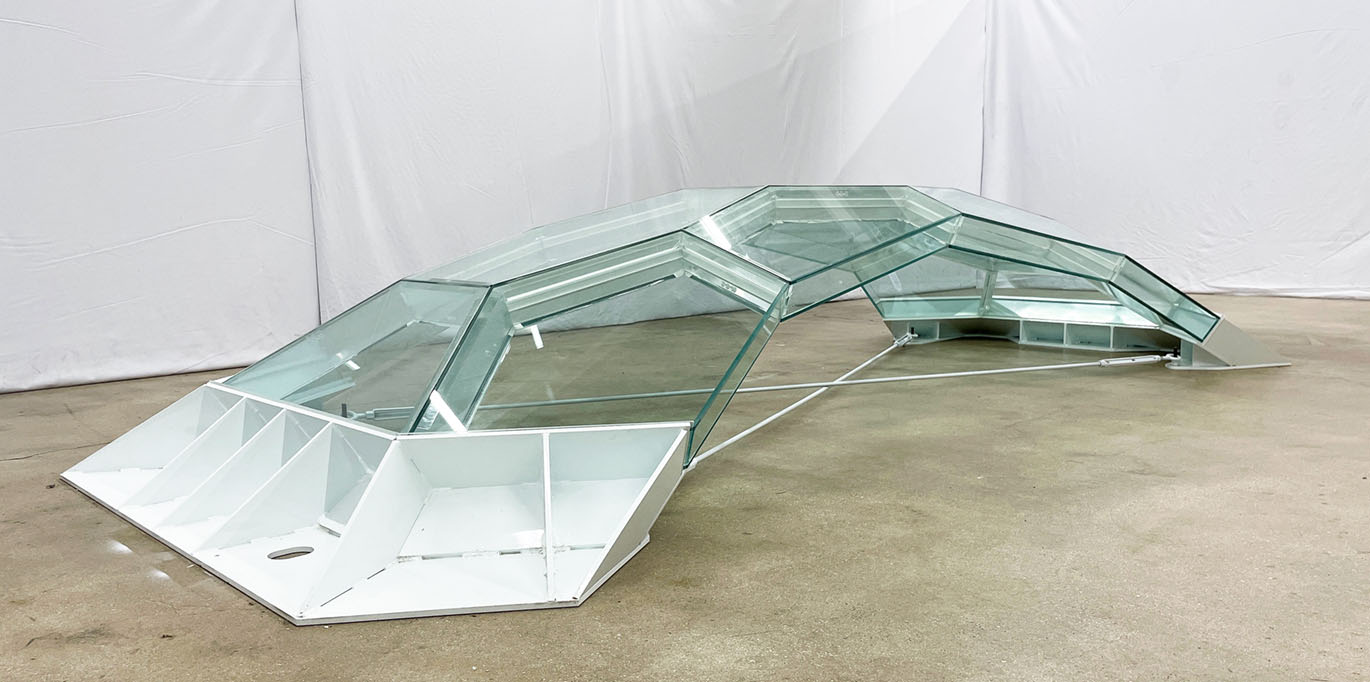Funicular Glass Bridge Prototype: Design Optimization, Fabrication, and Assembly Challenges

Abstract
Polyhedral Graphic Statics (PGS) is an effective tool for form-finding and constructing complex yet efficient spatial funicular structures. The intrinsic planarity of polyhedral geometries can be leveraged for efficient fabrication and construction using flat sheet materials, such as glass. Our previous research used PGS for the form-finding of a 3 m-span, modular glass bridge prototype to be built with thirteen unique hollow glass units (HGUs) in a compression-only configuration. This paper reports its design optimization, fabrication, and subsequent modular assembly process. The computational modeling of the geometries is facilitated with the efficient half-face data structure provided by PolyFrame, a software that implements PGS. Regular float glass and acrylic are selected as the main structural materials, and they are fabricated using 5-axis water jet cutting and CNC milling techniques. With the help of 3 M™ Very High Bond tape, the glass parts and acrylic parts are bonded as HGUs, which serve as the basic structural and assembly modules. Surlyn sheets are used as interface material to prevent glass-to-glass direct contact between HGUs. The digital model is also simulated using ANSYS to ensure the effectiveness of the design. Due to the lightweight of the HGUs, the assembly of the bridge can be done by one person without the requirement of any heavy construction machinery.
Published
Issue
Section
Projects & Case studies
License
Copyright (c) 2022 Yao Lu, Alireza Seyedahmadian , Philipp Amir Chhadeh, Matthew Cregan, Mohammad Bolhassani, Jens Schneider, Joseph Robert Yost, Gareth Brennan, Masoud Akbarzadeh

This work is licensed under a Creative Commons Attribution 4.0 International License.



